Medical school physicians, staff aid hurricane victims
Liang, Char, Keeperman, Fehr, Davisson help in response to Hurricanes Harvey, Irma, Maria
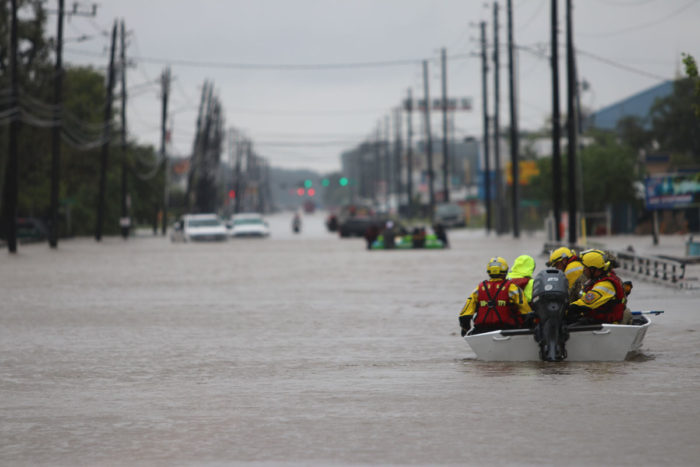 Courtesy of Boone County Fire Protection District
Courtesy of Boone County Fire Protection DistrictA swift-water rescue team from Missouri Task Force 1 motors down a flooded road in Houston, searching for victims of Hurricane Harvey. Five employees of Washington University School of Medicine in St. Louis helped with emergency relief efforts after devastating hurricanes hit the southern United States and the Caribbean this summer.
About 6 p.m. on Aug. 24, Stephen Liang, MD, an assistant professor of medicine at Washington University School of Medicine in St. Louis, received a text alerting him to prepare for possible deployment to Texas. Hurricane Harvey had just begun its assault on the Gulf Coast, and days of rain and flooding were still to come. By 7:30 p.m. the order was confirmed, and by 11:30 that night Liang had packed his bags, kissed his wife and four children goodbye and arrived in Columbia, Mo., ready to deploy as a member of the search-and-rescue team Missouri Task Force 1.
Liang is one of at least five Washington University faculty and staff who dropped everything to help victims of this year’s historically disastrous hurricane season. Jacob Keeperman, MD, worked for a company that sent helicopter emergency medical services to Texas during Hurricane Harvey; Douglas Char, MD, was called to Texas and then Washington to help oversee the medical response to Hurricanes Harvey and Irma; and Jim Fehr, MD, and Ty Davisson deployed to Puerto Rico in the aftermath of Hurricane Maria.
While they were away, their colleagues pulled together to keep operations on the Medical Campus running as normal.
“Sometimes people forget about all the help that’s provided back home,” Keeperman said. “We could never have gone if we didn’t have colleagues who picked up the slack and covered our shifts. They contributed to the hurricane response effort, too.”
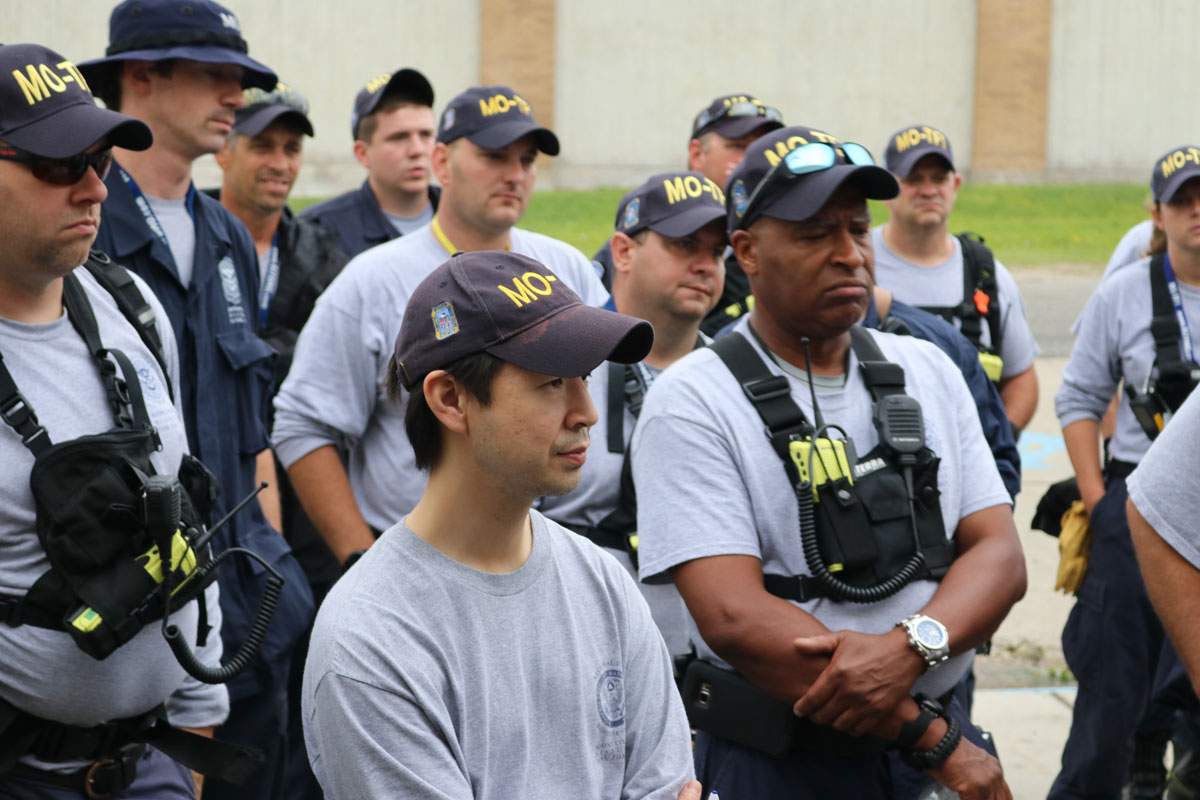 Courtesy of Missouri Task Force 1
Courtesy of Missouri Task Force 1Stephen Liang, MD
Liang is a member of Missouri Task Force 1, part of the Federal Emergency Management Agency’s (FEMA) National Urban Search & Rescue Response System. The team trains year-round so its members are prepared to respond within hours for just such a disaster as Hurricane Harvey. Based out of the Boone County Fire Protection District, the search-and-rescue team meets regularly at a training facility in Columbia, Mo., and practices navigating unstable structures, excavating collapsed buildings and handling hazardous materials – honing the skills needed to rescue people trapped in urban areas during natural disasters.
As Harvey made landfall, FEMA called on Missouri Task Force 1, instructing its leaders to deploy a team specialized in swift-water rescue. Missouri Task Force 1 sent 47 firefighters, paramedics, medical personnel, logistics staff, engineers and canine handlers – as well as two search dogs and two dogs trained to identify human remains – to Texas. An emergency medicine physician, Liang served as the medical officer.
“We drove in during the hurricane,” Liang said. “We first deployed to San Antonio, then to Rockport, Texas, on the second day. But the local fire departments had the situation under control in Rockport, so we moved on to Houston. It was raining all through the first few days. The first night in Houston our staging area actually flooded, and we ended up driving through high water to get to our second staging area.”
In Houston, Missouri Task Force 1 rescued or evacuated about 400 people, as well as many pets. Liang was principally responsible for keeping the team healthy as it conducted strenuous and sometimes dangerous search-and-rescue operations. He also conducted medical checks on people brought to safety by his teammates.
“They were bringing people in on boats and dump trucks, and we’d ask, ‘Is there anything wrong? Do you need anything from a medical standpoint?’,” Liang said. “If they have serious problems, we have equipment to stabilize patients and then we can call a helicopter or ambulance, and get the person to a functional hospital. But for the most part, people are just wet and want to get out, so we talk to them quickly and then send them to a shelter.”
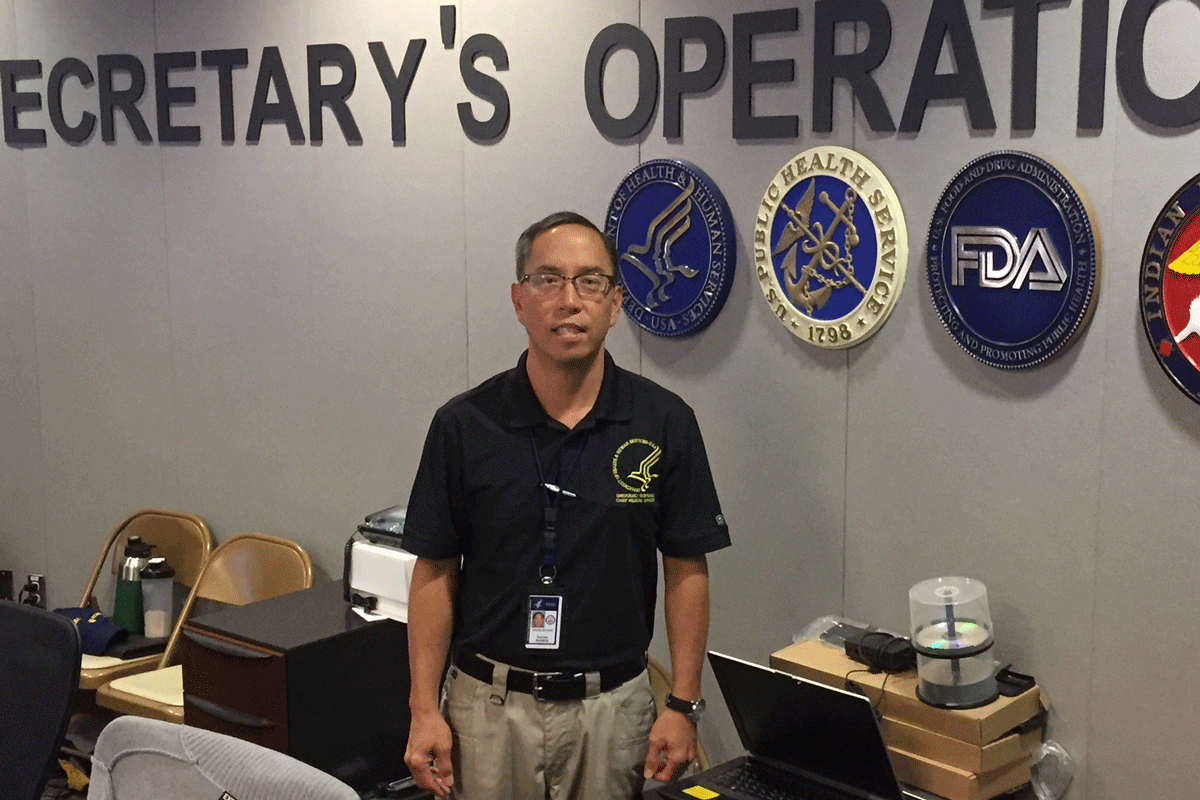 Courtesy of Douglas Char
Courtesy of Douglas CharThe crisis room at the U.S. Department of Health and Human Services headquarters in Washington is staffed 24 hours a day in case of national emergencies. During Hurricanes Harvey, Irma and Maria, Douglas Char, MD, served as chief medical officer for federal medical response from 7 p.m. to 7 a.m. each day for two weeks.
Douglas Char, MD
Char sees deploying as part of a federal team during national emergencies as an opportunity to serve.
“When disasters happen, most people feel helpless,” he said. “Maybe they’ll donate money or blood, but they usually can’t do more than that. As part of an organized response team and system, I get to do more. The system is far from perfect, but most of the time we do good work and help people by using our medical skills.”
A professor of emergency medicine, Char is a National Disaster Medical System (NDMS) team member. In the event the president declares a national emergency and the U.S. Department of Health and Human Services (HHS) calls for a medical response, the NDMS is activated.
Char serves as the medical director of a Missouri medical group within his NDMS team. The group of part-time federal employees is made up of more than 100 doctors, nurses, paramedics and other health-care professionals who provide treatment in shelters, nursing homes and hospitals. Ideally, the group is able to provide emergency medical services in a designated building, but in worst-case scenarios, team members set up a nonsurgical hospital. “We have everything we need — a pharmacy, ventilators, tents, generators, water-purification systems and lighting,” he said.
During Hurricane Harvey, Char’s group was assigned to Dallas. The team was sent home after a few days, but Char was asked to travel to Austin as chief medical officer and consultant for an HHS team handling hurricane-related flooding in Texas and Louisiana. He helped decide which shelters needed medical services and for how long, and compiled reports on outbreaks of disease.
After two weeks in Austin, Char was asked to fly to Washington to serve as the overnight chief medical officer for federal medical response to Hurricane Harvey. The crisis room at the HHS headquarters where he worked is staffed 24 hours a day in case of national emergencies. This assignment was similar to his responsibilities in Austin but on a bigger scale, with the focus on not only Hurricane Harvey, but on Irma and Maria, too.
Char and representatives from the Food and Drug Administration, the Centers for Disease Control and Prevention, and other federal agencies prepared daily reports about the number of people seeking treatment at hospitals, the illnesses being reported, and the number of pharmacies that were open. Such information is used to decide where to send medical teams.
“This was an interesting experience because it was the first time I had worked at the HHS headquarters,” he said. “You’re the doc if the phone rings.”
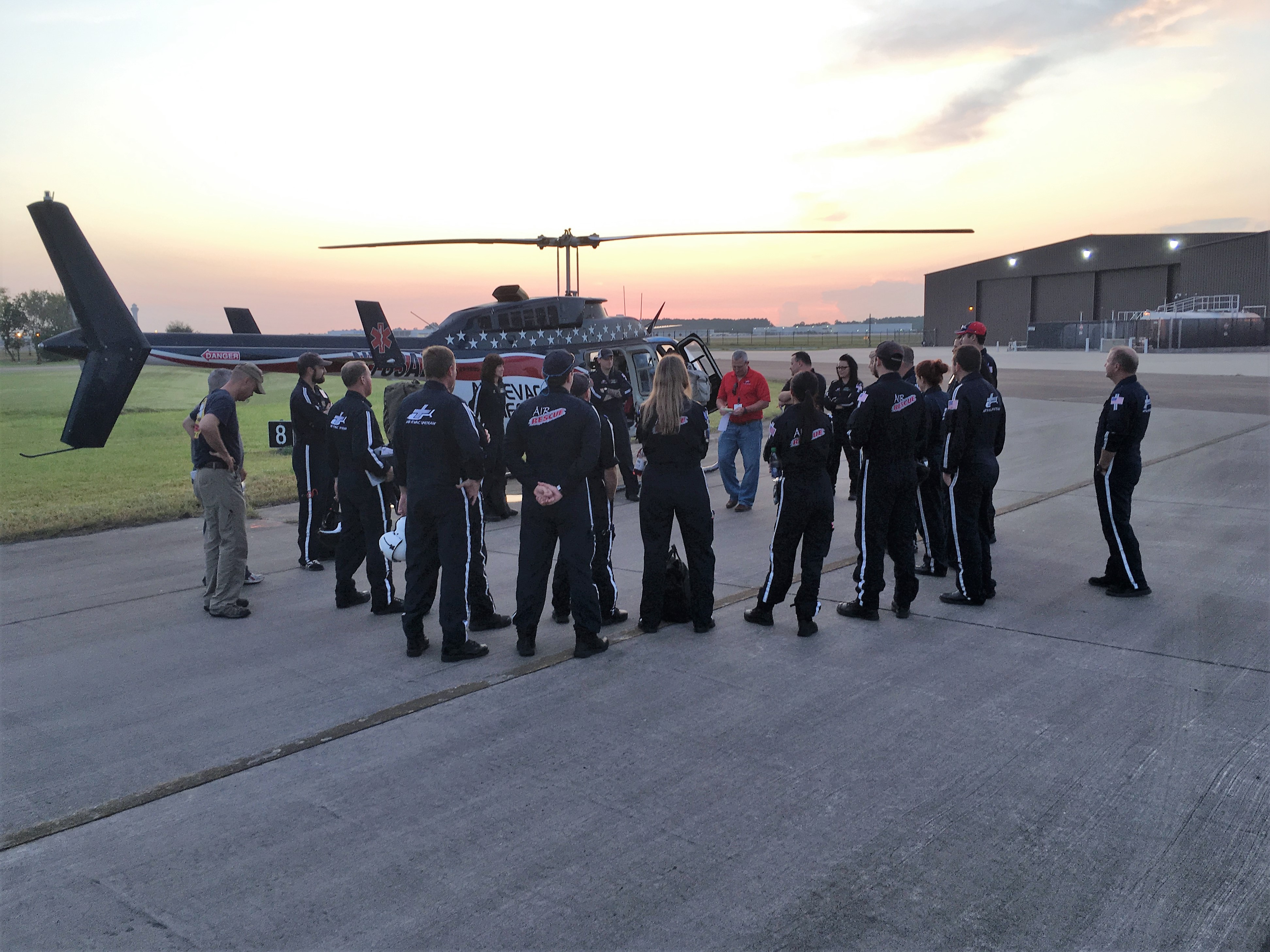 Joe Fowler
Joe FowlerJacob Keeperman, MD
In the 15 years Keeperman has provided emergency services during natural disasters, he has learned an important lesson: Individuals shouldn’t travel to disaster areas on their own to try to help.
“It’s important to have people who are trained to handle themselves in austere environments and to operate in a coordinated response,” he said. “If people go on their own, what equipment are they going to have, and are they going to be able to provide help? Plus, they usually need food and a place to sleep. They will end up being more of a burden than a help.”
An assistant professor of anesthesiology and of emergency medicine, Keeperman works part-time for Air Evac Lifeteam, a national helicopter emergency medical services company based in O’Fallon, Mo. Federal and state governments activate a national EMS coordination center that taps outside resources if needs during a disaster exceed local resources.
Keeperman serves as the Missouri medical director on an operations team that decides which aircrafts get sent to affected areas and what protocols will be followed, which depends on the type of disaster. “The Air Evac operations team puts in hundreds of hours to coordinate our resources to help those in need, and I just help with one piece of the puzzle.
“All sorts of planning goes into preparing to help in a disaster,” he added. “You need to know how you are going to respond and have to decide what sort of equipment to bring and what kinds of medicine to take.”
After Hurricane Harvey, Air Evac sent 16 aircraft from throughout the national fleet to Houston. There, team members delivered patients from flooded hospitals to dry medical centers, and people in need of dialysis to dialysis centers outside of Houston, Keeperman said. The company also sent aircraft to Florida in response to Hurricane Irma.
Keeperman — who also serves as a member of the Midwest-1 Disaster Medical Assistance Team of the NDMS — provides emergency services during natural disasters for a number of reasons.
“It’s rewarding and challenging, it’s always something different, and it’s a way to help people when they need help the most,” he said. “Plus, I get to work with people from different backgrounds in environments that require health-care workers to improvise to provide the best care possible.”
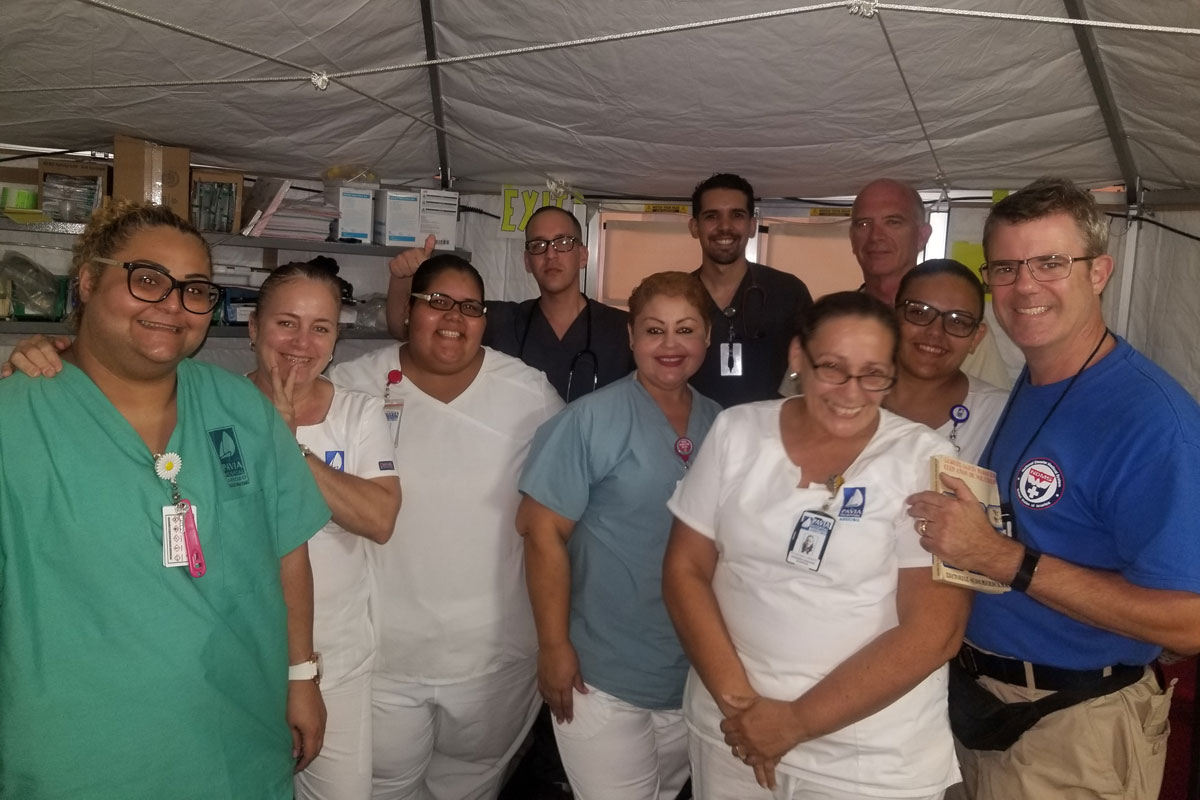 Courtesy of Jim Fehr
Courtesy of Jim FehrJim Fehr, MD
As a physician specializing in anesthesiology and pediatric critical care, Fehr routinely encounters fast-paced, high-stress medical situations.
“It’s often quite challenging, but when treating patients at St. Louis Children’s Hospital, I’m not worried about a lack of running water or prolonged power loss and managing generators,” said Fehr, a professor of anesthesiology and of pediatrics at the School of Medicine.
However, in hurricane-ravaged Puerto Rico this September, Fehr’s main job as part of the federal government’s Disaster Medical Assistance Team (DMAT) was to focus on nonemergency and logistical needs so health-care workers on the island commonwealth could concentrate on providing care to the sickest, most desperate residents.
“Of course, if there was a patient emergency, we could help,” Fehr said. “But health-care workers in Puerto Rico were in control. Our team, which included nurses from Barnes-Jewish Hospital as well as other St. Louis-area physicians, pharmacists and paramedics, was focused on preventing indirect deaths related to Hurricane Maria.”
Indirect deaths may include, for example, a patient who dies because storm-damaged roads prevent her from refilling a life-saving prescription — or the loss of a patient who is dependent on a kidney dialysis machine but lives in an area where power is unavailable.
In the northwestern town of Arecibo, where Fehr was deployed, power was out and hospital generators worked overtime. The hospital lacked air conditioning to tame the unhealthy tropical heat. “It got up to 110 degrees inside the hospital,” he recalled. “We set up two air-conditioned tents outside.”
He and other health-care workers also traveled throughout the community to churches, nursing homes, schools and shelters to care for the sick and injured, refill prescriptions and “do basically whatever was needed,” said Fehr, a longtime member of the DMAT. He also helped in the aftermath of Hurricane Katrina in New Orleans.
“Going to a disaster to help is a small payment toward a debt of gratitude and a hope that one’s efforts can help others rise up and make the world just a little bit better place,” Fehr said. “What permits me to go is a supportive wife and kids, and wonderful colleagues in pediatric anesthesiology and pediatric critical care who selflessly pick up the slack when I’m gone.”
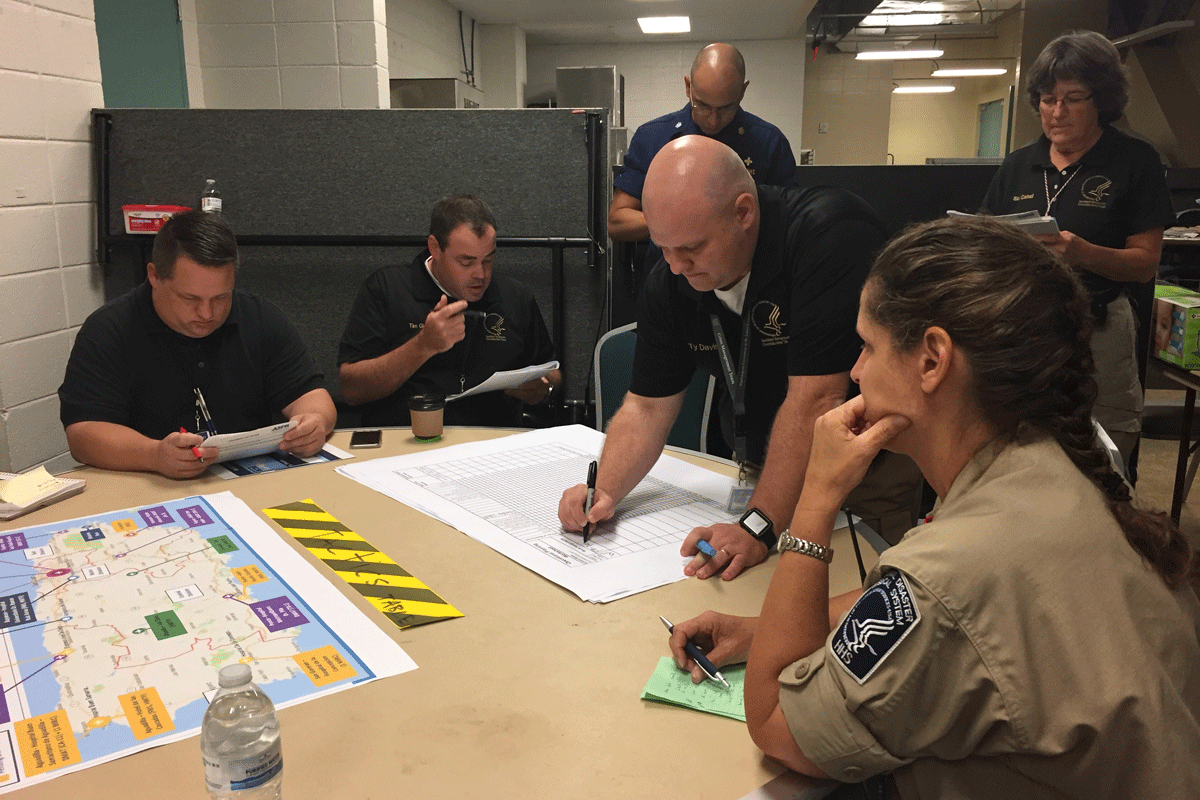 Courtesy of Ty Davisson
Courtesy of Ty DavissonTy Davisson
When Davisson traveled to devastated parts of Puerto Rico to help in the aftermath of Hurricane Maria, he was struck by the morale and spirit of people in some of the most affected areas.
“It is heartbreaking to see citizens scooping water or filling water bottles out of drainage ditches,” he said. “But while it may take them years or decades to recover, they are banding together as communities and are incredibly resilient.”
For three weeks, Davisson helped coordinate the federal government’s disaster response from an emergency command center in the San Juan Convention Center. He managed teams of medical staff (more than 1,000 people in all), mortuary workers, public and behavioral health experts, and other resources. Davisson deployed to Puerto Rico with the National Disaster Medical System (NDMS).
“Our job was to make sure we had an efficient medical response,” said Davisson, director of emergency management and business continuity at Washington University. “Each day, we planned, evaluated and tracked resources. This process helped us develop a daily incident action plan, which told us where resources should go the next day.”
The hotel in San Juan where Davisson stayed had electricity, but many parts of the capital city did not. On the rest of the island, conditions were rough — scarce electricity, blocked roads and little or no running water. Federal staff in other parts of the island ate pre-packaged, ready-to-eat meals and drank bottled water.
Davisson said he helps out during disasters because he finds it rewarding to help people in tragic situations. Coordinating and managing federal resources also sharpens skills he may need one day at the university in the event of a disaster or major crisis.
Each night in Puerto Rico, Davisson Face-Timed with his six children in Byrnes Mill, Mo. They wanted to know what he was eating, what he was seeing and when he was coming home. “I sent them a lot of photos of the devastation to help them understand why I needed to stay for a while,” he said. “They are able to look at the greater good that I am doing and understand why this work is important to me.”







